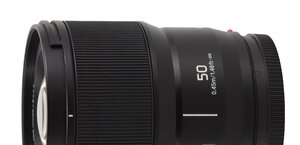Nikon Nikkor AF-P DX 70-300 mm f/4.5-6.3G ED VR
8. Vignetting
| Nikon D500, 70 mm, f/4.5 | Nikon D500, 70 mm, f/5.6 |

|

|
| Nikon D500, 135 mm, f/4.8 | Nikon D500, 135 mm, f/8.0 |

|

|
| Nikon D500, 200 mm, f/5.3 | Nikon D500, 200 mm, f/8.0 |

|

|
| Nikon D500, 300 mm, f/6.3 | Nikon D500, 300 mm, f/8.0 |

|

|
A combination of 70 mm and f/4.5 aperture means that you’ll lose 24% (−0.78 EV) of light in frame corners (−0.78 EV). It is a moderate result. Problems end by f/5.6 and f/8.0 where we got respectively 17% (−0.52 EV) and 7% (−0.20 EV).
Please Support UsIf you enjoy our reviews and articles, and you want us to continue our work please, support our website by donating through PayPal. The funds are going to be used for paying our editorial team, renting servers, and equipping our testing studio; only that way we will be able to continue providing you interesting content for free. |
- - - - - - - - - - - - - - - - - - - - - - - - - - - - - - - - - - - - - - - - - - - - - - - -
It is a bit easier to notice vignetting at the 135 mm focal length. In its case by f/4.8 the brightness loss in frame corners amounts to 36% (−1.30 EV) and then decreases to 33% (−1.16 EV) on stopping down to f/5.6. By f/8.0 the vignetting is 18% (−0.58 EV), and then by f/11 it decreases to an imperceptible value of 8% (−0.24 EV).
After passing to 200 mm you see few changes. At the maximum relative aperture you have to deal with light fall-off reaching 33% (−1.17 EV), and by f/5.6 it decreases to 32% (−1.14 EV). By f/8.0 the vignetting amounts to 19% (−0.59 EV), and by f/11 it drops to an imperceptible value of 8% (−0.25 EV).
At 300 mm focal length and by f/6.3 aperture the aberration level is 31% (−1.08 EV). On stopping down the aperture to f/8.0 it decreases to 22% (−0.72 EV). By f/11 the problem becomes marginal as the official result we got amounted to just 9% (−0.27 EV).
| Nikon D500, 70 mm, f/4.5 |
 |
| Nikon D500, 135 mm, f/4.8 |
 |
| Nikon D500, 200 mm, f/5.3 |
 |
| Nikon D500, 300 mm, f/6.3 |
 |






